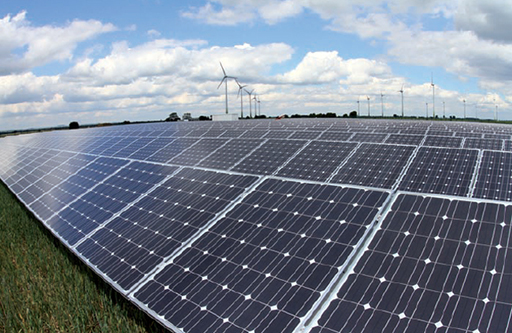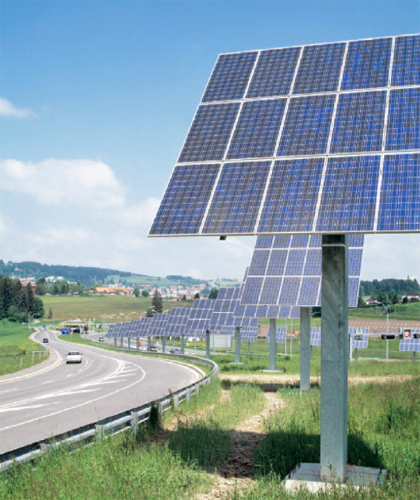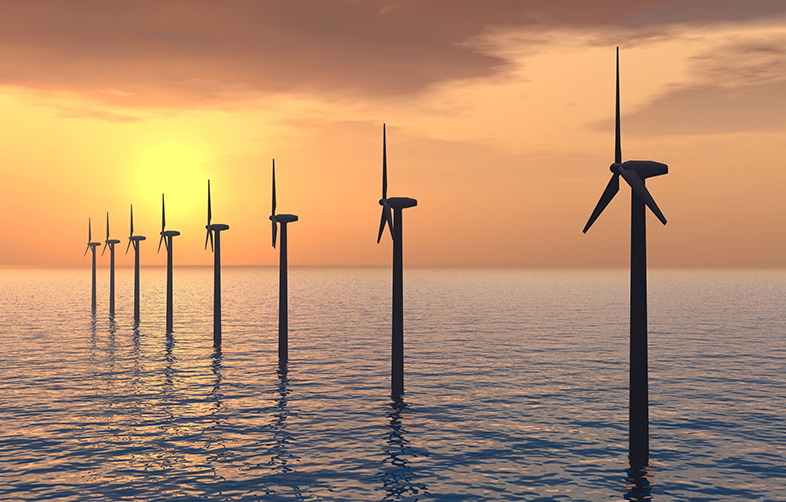6 Large PV power plants
Large, PV power systems, many on a multi-megawatt scale, have been built to supply power for local or regional electricity grids in a number of countries, including Germany, Switzerland, Italy, China, India and the USA.
Land used for PV can often be compatible with its use for other purposes. For example the 1 MW ‘sun farm’ shown in Figure 10 has been designed to allow ‘wildlife-friendly’ plants to live underneath the PV arrays. The need to avoid overshading of one ground-mounted panel by another, particularly in winter, means that they may only occupy 30–50% of the ground area, particularly at high latitudes, leaving space for wildlife and plants.

Large PV power plants are attractive in those areas of the world that have substantially greater annual total solar radiation than northern Europe, such as North Africa or southern California. Such areas also have clearer skies, which means that the majority of the radiation is direct, making tracking and concentrating systems effective and further increasing the annual energy output.

Activity 3
What do you think are the advantages and disadvantages of large, stand-alone PV plants compared with building-integrated PV systems?
Answer
Advantages:
Large stand-alone PV plants can:
- Take advantage of economies of scale in purchasing and installing large numbers of PV modules and associated equipment
- Be located on sites that are optimal in terms of solar radiation
Disadvantages:
- The electricity they produce is not used onsite and has to be distributed by the grid, which involves transmission losses, and the price paid for the power by a local electricity utility may only be the ‘wholesale’ price at which it can buy power from other sources.
- Large plants also require substantial areas of land, which has to be purchased or leased, adding to costs – although low-value ‘waste’ land, for example alongside motorways, can be used.
